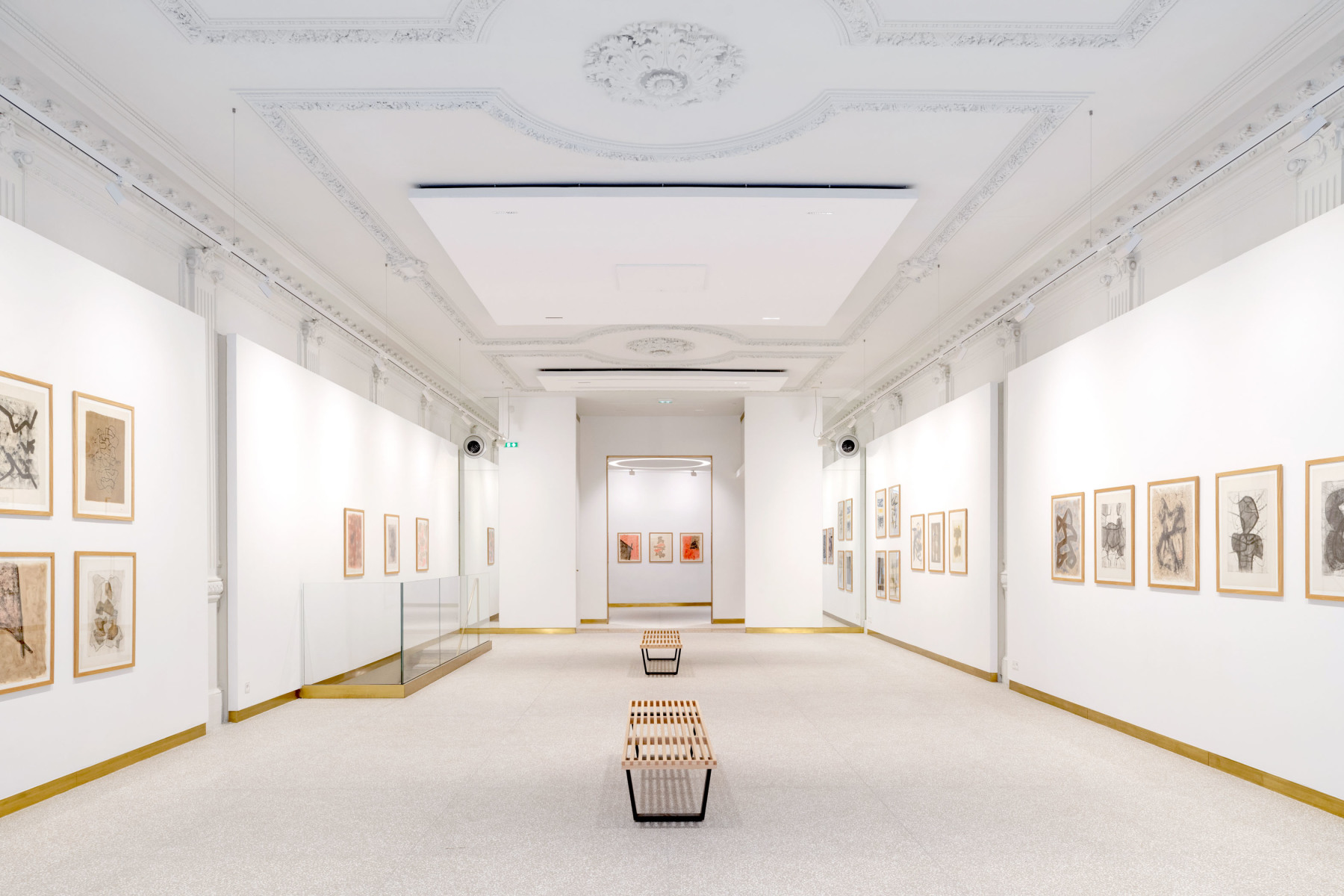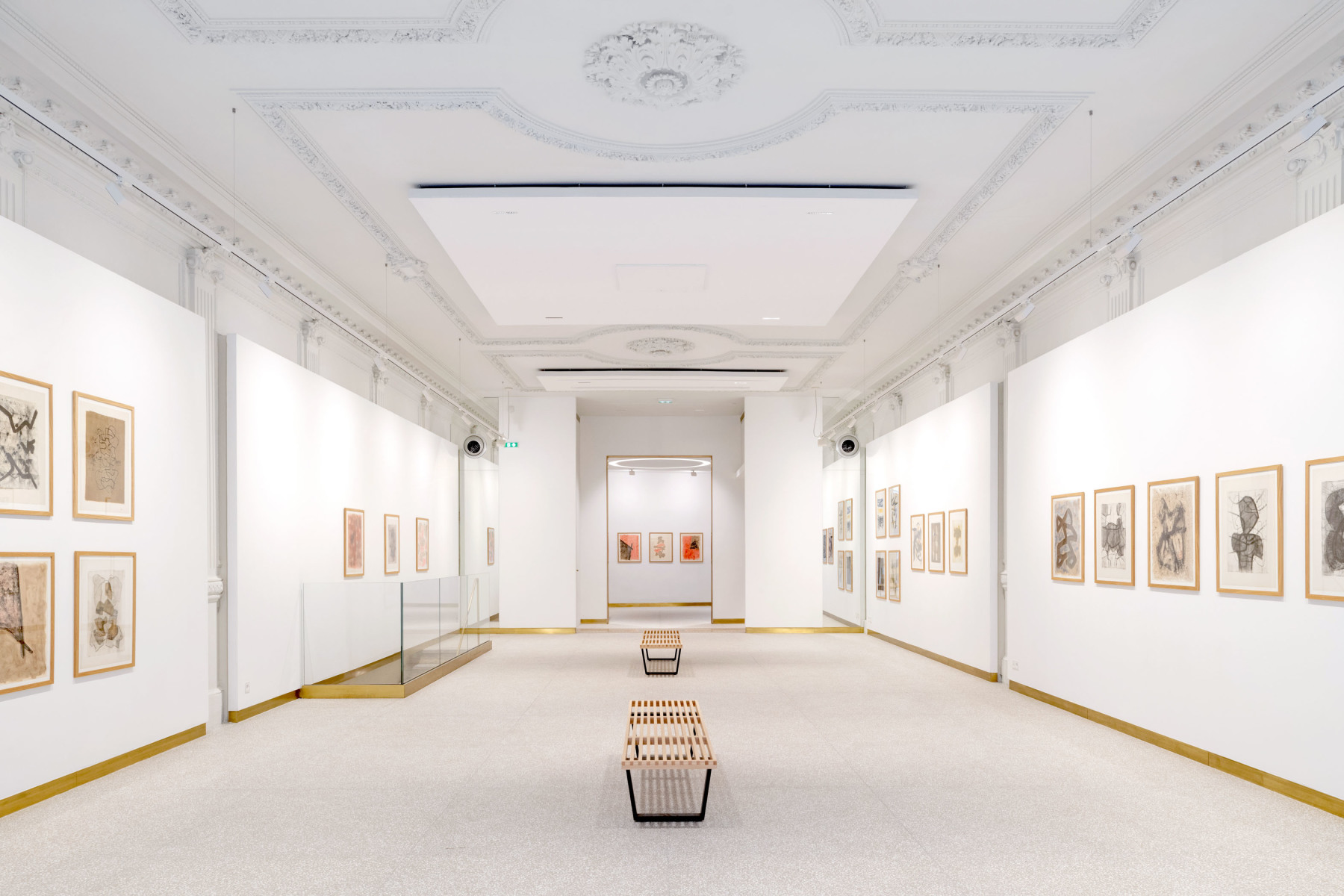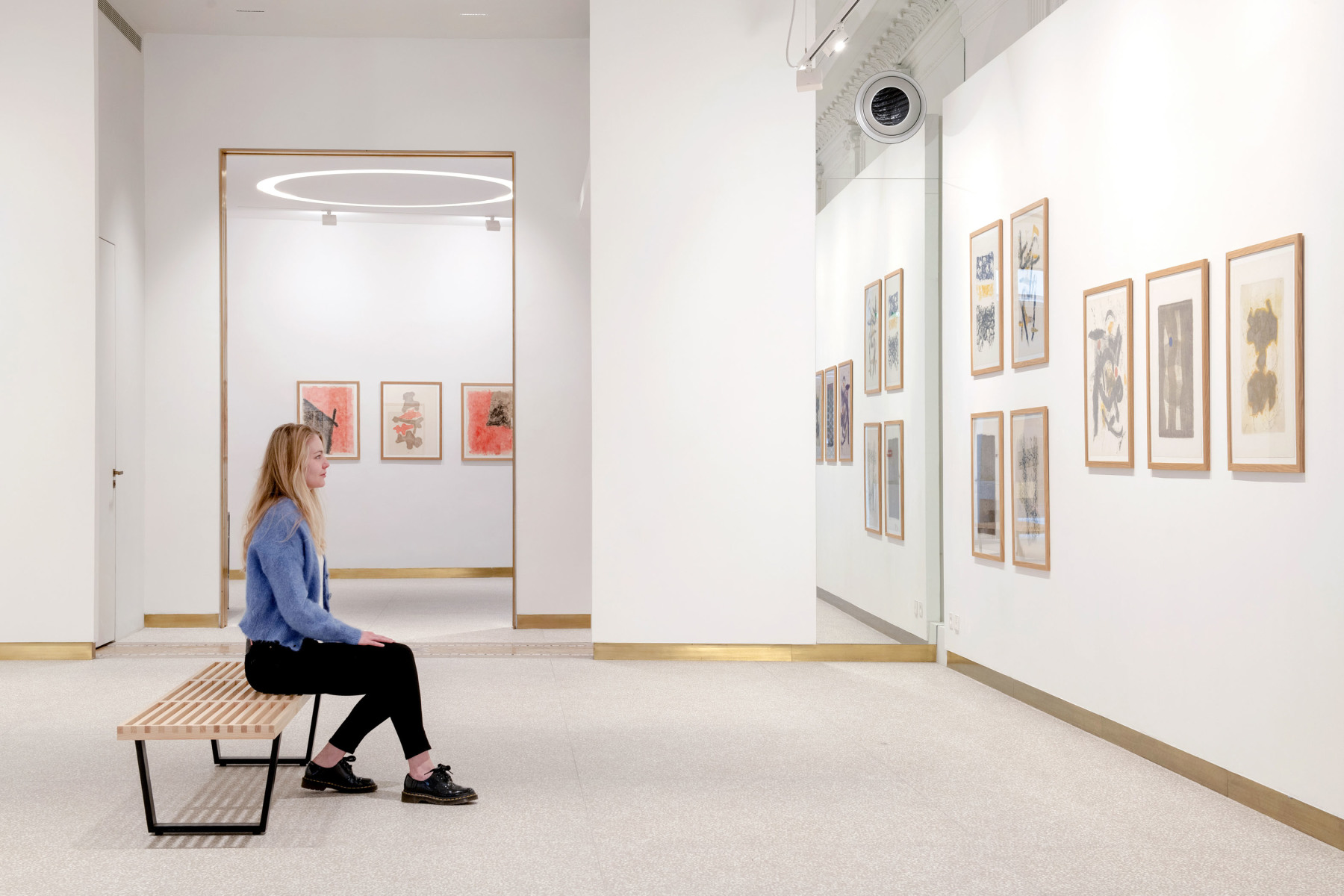André-Pierre Arnal — Works on paper
Origins (1960-1965)
January 12 - February 11, 2023
André-Pierre Arnal — Works on paper
Origins (1960-1965)
January 12 - February 11, 2023
Looking at André-Pierre Arnal’s series of works on paper from the 60s, a collection of traces, scars, and gashes sometimes violently thrown onto the paper, of enigmatic marks, vague lines, forms, and stains without figurative references, and even of painted numbers that suddenly strike us as strange.
We might think that he belongs to this generation of painters “who start with signs they later need to make sense of, whereas previous generations started with meaning and then found it a form.” We won’t be surprised to learn that those are the words of Jean Paulhan’s in L’art informel, since we know that, in 1967, when studying in Montpellier, Arnal wrote a thesis in which he analyzed Paulhan’s texts about 20th-century art.
What do Arnal’s works on paper of these years owe to Jean Paulhan and texts such as Braque le patron (1946) and Fautrier l’enragé (1962)? Almost everything, we might be tempted to say when seeing sentences like this find such an echo: “in Fautrier, painting stems from something else, something like indignation, or at least an emotion of a metaphysical or quasi-metaphysical nature”, and Arnal understand, reading Paulhan about Fautrier, the importance of material, as a way of going to the essence, dismissing eloquence and rhetoric, and revoking all attempt at explaining while creating an atmosphere of violence: “I don’t know any painters as enraged as he was, wrote Paulhan to Jouhandeau, in comparison Corot and Bonnard are mere anglers, little old men in their garden.”
How then should we understand Arnal’s lacerations, nervous scarring, and scratched lines at the surface of the paper in his 1964 and 1965 monotypes other than as the expression of such rage? Something is happening in the impossibility of finding words. Arnal questions painting by questioning his inner motions, the relationship to intimacy, and unconsciousness.
Since words are shrouded in silence, he must look for forms. Forms that specifically mean nothing, or are the most neutral and least significant possible, the degree zero of form. Of course, we can think of the evolution of Claude Viallat’s work during those years. The sign-traces of paint emerged at the very end of the 60s and replaced these scratches and nervous tangles of lines, yet retaining the dry and wrung-out lyricism of an abstraction trying to renew itself.
When looking at these works on paper, which very much lived with their time, we naturally think of the informalist artists from post-war gestural abstraction, of Paul Klee, who deeply influenced Arnal, as well as Camille Bryen. But mostly, in a pioneering manner, they announce the entire pictorial world he later forged: his play with the pictorial medium, his prints, strings, folds and scratches, his tears, and his emphasis on color.
We look at them and we hear their silent, almost prophetic, talk. That of Maurice Blanchot -who Arnal has read a lot- who wrote in La Bête de Lascaux: “in writing as in painting, it is through silence, the majestic silence, an almost inhuman muteness, that the chill of sacred forces passes through art.” A word of silence that suggests what we have been holding inside since childhood, a screaming silence. It is “the omen of early childhood” Blanchot talks about, that of young André-Pierre in front of his father coming back from his evangelical missions, a force that makes him shiver as God speaks through his mouth. In those years, Arnal uses painting to loosen up the folds of childhood as one unfolds paper birds, reconnecting with rites and sacredness, shamanic effusion, magic, and mystery. What emerged was the intuition of the possibility of a language embodied in these forms, signs and traces, in these winding colors and sinuous pictorial gestures laid on a sensual, always slightly mysterious, medium: that of paper.
Bernard Collet
Decembre 2022
Artist : André-Pierre Arnal
Visitor Information
Ceysson & Bénétière
21 rue Longue
69001 Lyon
Tuesday - Saturday
11am - 6pm
T: +33 4 27 02 55 20










